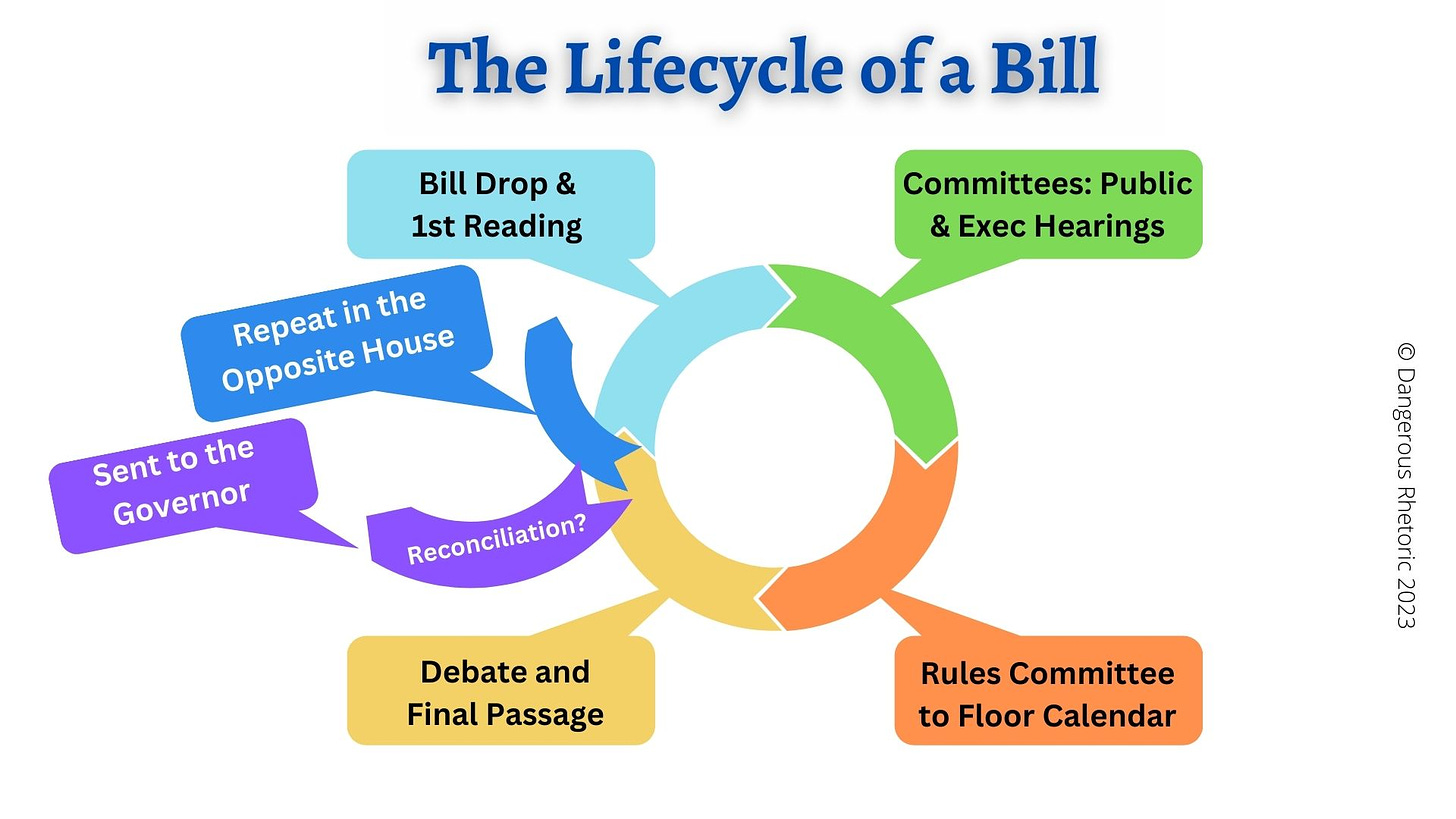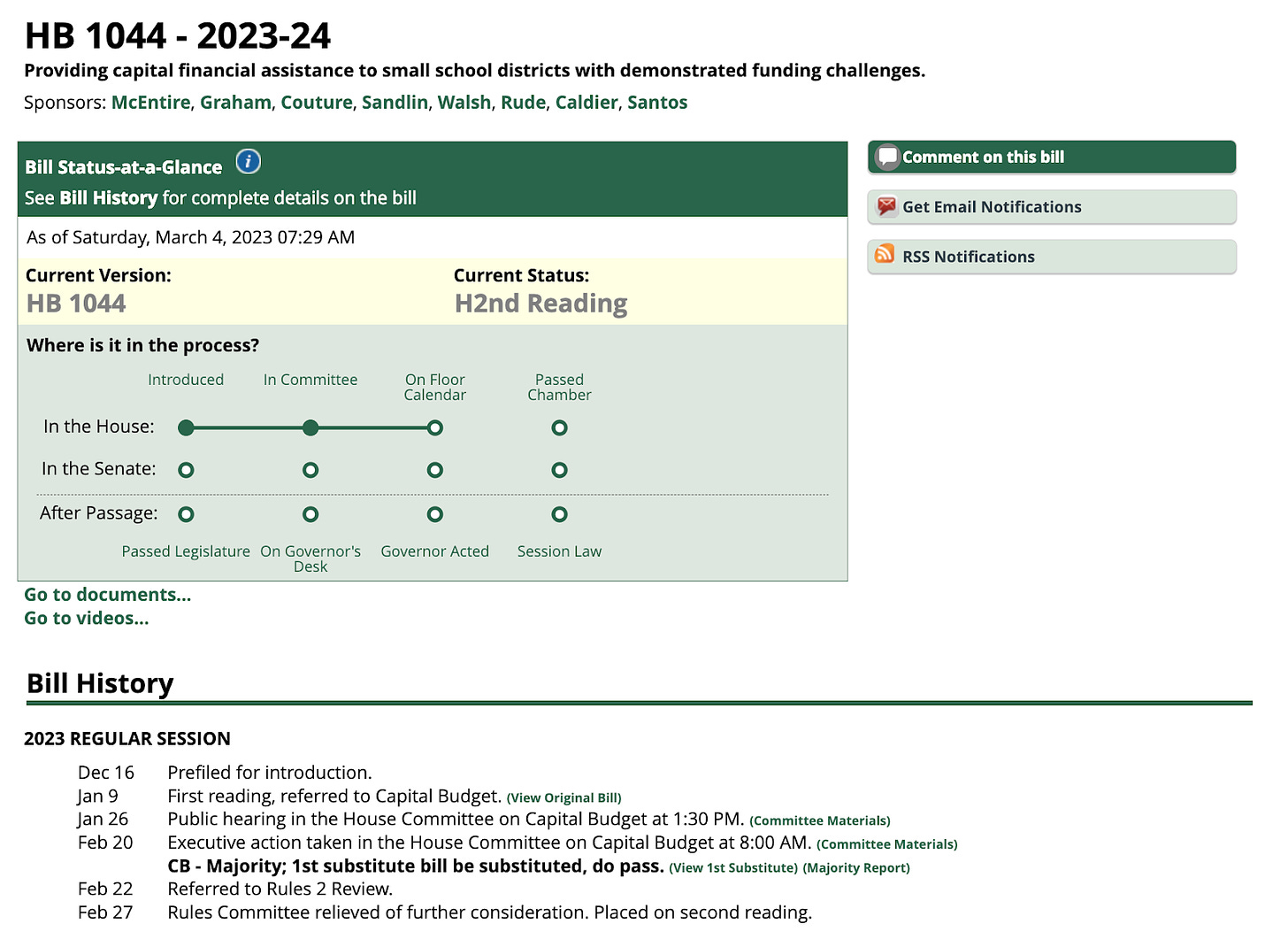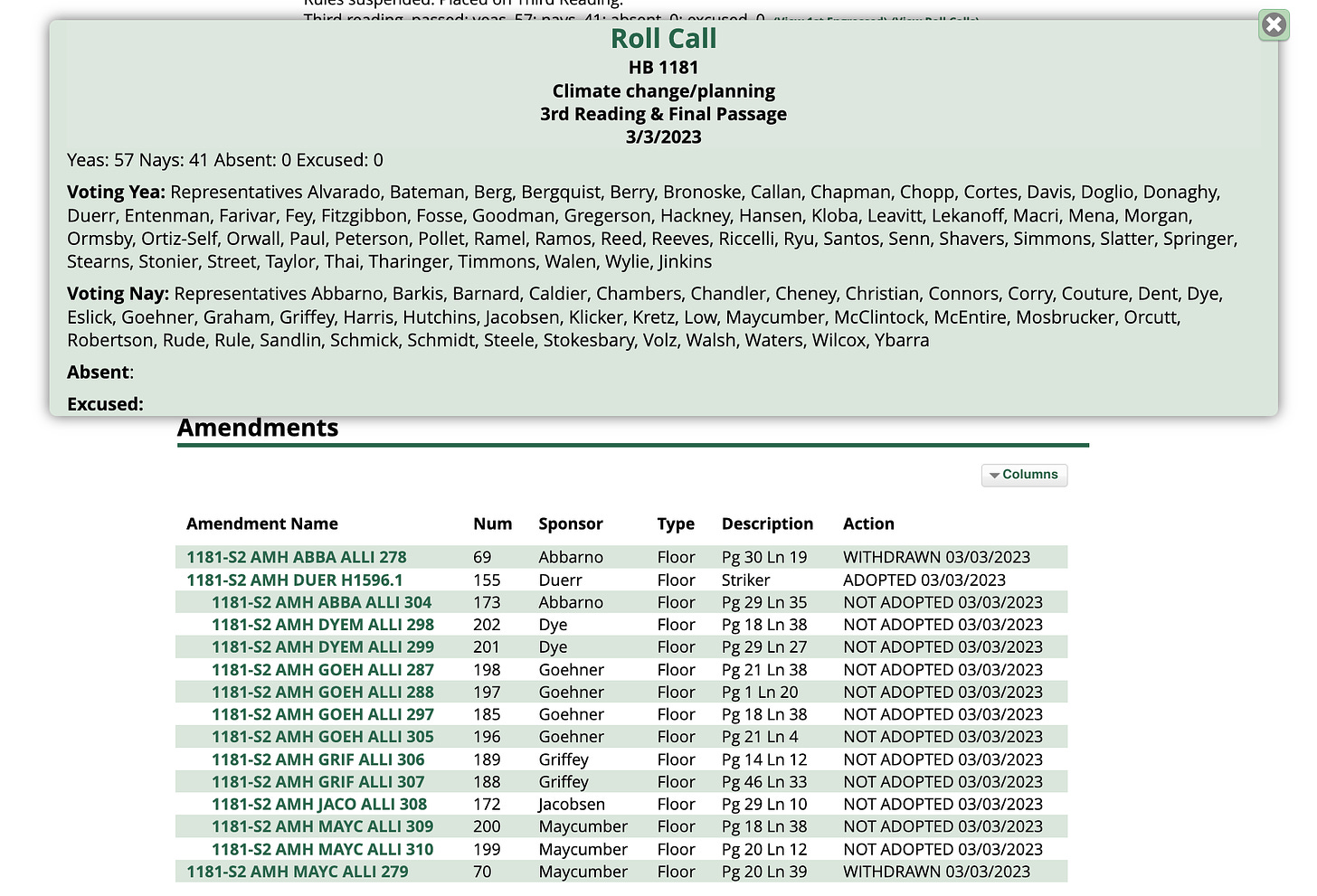Life cycle of a bill in the Washington Legislature
From First Reading to Final Passage... What's happening to that bill?
Washington state is blessed with a wonderful website that citizens can use to participate in the process of lawmaking during a legislative session. The site, Leg.wa.gov, allows citizens to track bills, watch floor debates, and submit remote testimony.
However, it can be difficult to understand what is happening to a bill if you don’t know the rather complex journey of a bill. Today, let’s take a look at the lawmaking process which was developed to be collaborative and deliberate.
A bill is filed or “dropped” by a primary sponsor. It gets a bill number and then is sent to the staff who will prepare it for the floor session on the next day. A bill must be “read on the floor” three times before it can pass.
The next step is the “first reading.” At the beginning of every floor session, the bills are “read in” and assigned to a committee. This is the first of three readings on the floor.
After being “read in”, the bill is sent to the committee, and if the chair chooses, the bill will be scheduled for a public hearing where people can testify in support or opposition. There may be work done at this time to fix a problem or to change it to get additional support. Not every bill gets a public hearing—that’s up to the chair to decide.
HB 1680, a bill to help public libraries, is an example of a bill that “died in committee”.
After the public hearing, the committee chair may schedule the bill for an executive session. That is when a vote is taken by the members of the committee to amend the bill and/or move it out of committee.
Again, not every bill gets an executive session and bills that do get considered don’t automatically get moved on. HB 1397, also known as the "Oakley Carlson Act", is an example of a bill that got stuck at this point in the process.
Or, a bill can be considered in executive session, but doesn’t sent on to Rules. HB 1412 about the foreign ownership of Ag Lands was stopped in executive session.
In addition, sometimes a bill is moved from the original committee to a second committee, like the House Appropriations Committee. The public hearing and executive session process will repeat in the next committee before the bill moves on. Lots of bills get stuck in the second committee, like HB 1531, regarding the siting of airports.
At some point, a bill that is moving on will be referred to the Rules committee. A bill is pulled to the floor only if the Rules committee chooses to do so. Like other committees, the majority of the members are made up of the majority party. In the Senate, it is presided over by the lieutenant governor. In the House, it is presided over by the speaker. No bills that are opposed by the majority will go to the floor.
On the Floor Calendar!
When a bill is pulled to the floor, the bill history will say “placed on second reading”. The bill is now on the floor calendar and ready to go to the floor for a vote. The majority Democratic leadership will choose which bills they want to hear. The minority Republican leadership gets no say whatsoever! Any bills on the floor calendar that are not pulled to the floor by the cutoff date (in 2023, March 8) will die at that point.
HB 1044, providing capital financial assistance to small school districts, is an example of a bill that has moved to the floor calendar (as of March 4). It MIGHT get a vote on the Floor! But wait! It isn’t quite there yet!
Finally, when the leadership decides it wants to hear a bill, it is put on the order of consideration. The legislators get very little advance notice about which bills will be considered during each floor session. The only clue is the list of bills on the floor calendar.
Finally, it’s time for the floor debate and vote. When the bill comes up on the floor, a motion will be made similar to this: “I move “bill xxxx” advance to the second reading, the second reading be considered the third, and the bill be placed on final passage.” Remember the bill has to be read on the floor three times? This motion saves time by combining the second and third reading!
Then the bill is debated and voted on. Again, 99% of the bills are passed off the floor, because only the bills that the majority wants go to the floor, and they only schedule them once they know they have the votes.
A Climate Change Example
HB 1181 on Climate Change Planning is a great example of a bill that was hotly debated and heavily amended, and passed the House on a party-line vote on March 3 (see the roll call). Notice the amendment from Rep. Duerr (D) was a “striker”—a completely new version of the bill! Republicans fought hard to improve the striker using the amendment process, but the proposed Republican amendments all failed.
Please watch the House Floor Debate on HB 1181 on March 3. As you watch, imagine how difficult and frustrating it would be to do battle at the Legislature every day! The Republican representatives fought hard for you. What’s next? HB 1181 will now cross over to the Senate and go through the process all over again. Opponents of this bill have a second opportunity to improve or stop this bill. Please comment on the bill so your Senator will know what you think!
Take time to comment on the list of bills you are following and let your legislators know what you think about them. If you don’t have your own list, visit the Washington State Republican Party Olympia Watch page, and comment on their list of good bills and bad bills. We all win when we understand and participate in the process of lawmaking!
Nancy Churchill is a writer and marketing consultant in rural eastern Washington State, and the state committeewoman for the Ferry County Republican Party. She may be reached at DangerousRhetoric@pm.me. The opinions expressed in Dangerous Rhetoric are her own. Dangerous Rhetoric is also available on Rumble.







Thanks Nancy for ALL your hard work!